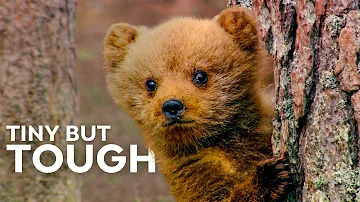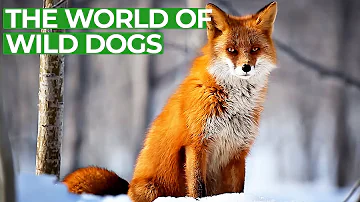
Havanese
Canis lupus familiaris

Meet the Havanese
The Havanese is a small, sturdy dog breed known for its silky, flowing coat and lively personality. Originally developed in Cuba, it served as a companion dog for the Cuban aristocracy and is the national dog of Cuba. Havanese dogs are intelligent, trainable, and highly sociable, making them excellent family pets. They are affectionate with their owners and often excel in dog sports due to their agility and eagerness to please.
Classification
Mammal
Habitat
Domesticated (primarily urban and suburban households)
Diet
Omnivore
Lifespan
14-16 years
Conservation
Least Concern
Weight
7-13 lbs (3-6 kg)
📖Fascinating Facts
Cuban Roots
The Havanese was originally bred as a companion for Cuban aristocrats in the 18th century and is now the country's national dog.
Hypoallergenic Coat
Their silky, double-layered coat is considered hypoallergenic, making them a good choice for allergy sufferers.
Smart & Trainable
Havanese are highly intelligent and excel in obedience, agility, and even therapy work, responding well to positive reinforcement.
📋Detailed Description
The Havanese is a small, sturdy, and compact toy breed, typically weighing between 4.5 and 7.3 kg (10–16 lbs) and standing 23 to 27 cm (9–11 in) at the shoulder. Its most distinctive feature is its long, silky, double coat, which can be straight or wavy and comes in a wide variety of colors and patterns. The breed has a slightly longer-than-tall body, expressive almond-shaped eyes, and drop ears covered in abundant hair. Havanese are known for their lively, springy gait, a result of their well-developed hindquarters and flexible joints. Anatomically, they possess a robust skeletal structure for their size, contributing to their agility and resilience. Behaviorally, Havanese are highly social, forming strong bonds with their families and displaying pronounced separation anxiety if left alone for extended periods. They are intelligent, responsive to training, and excel in canine sports such as agility, obedience, and even therapy work. Their playful, inquisitive nature makes them well-suited to interactive games and learning tasks. Havanese are also notable for their adaptability to various living environments, thriving in both apartments and larger homes, provided they receive sufficient mental and physical stimulation.
💡 Did you know?
The Havanese is the only dog breed native to Cuba and was once nearly extinct after the Cuban Revolution.
🔬Research & Sources
Wikipedia Summary
Havana is the capital and largest city of Cuba. The heart of La Habana Province, Havana is the country's main port and commercial center. It is the most populous city, the largest by area, and the second largest metropolitan area in the Caribbean region. The population in 2012 was 2,106,146 inhabitants, and its area is 728.26 km2 (281.18 sq mi) for the capital city side and 8,475.57 km2 for the metropolitan zone. Its official population was 1,814,207 inhabitants in 2023.
Last Modified: 6/1/2025
🎭Behavior & Social Structure
Havanese are renowned for their affectionate and people-oriented temperament. They are generally friendly with strangers, other dogs, and even cats, making them excellent companions in multi-pet households. Their playfulness persists into adulthood, and they often engage in fetching, chasing, and problem-solving activities. Unlike some toy breeds, Havanese are not prone to excessive barking, though they may alert their owners to unusual sounds. They are highly trainable, responding well to positive reinforcement and gentle guidance. Daily routines typically include periods of energetic play, social interaction, and rest. Havanese are known for their 'velcro dog' behavior, often following their owners from room to room and seeking close physical contact. Their feeding behavior is typical of small companion breeds, with a preference for frequent, smaller meals and a tendency to be selective eaters.
👶Reproduction & Life Cycle
The Havanese reaches sexual maturity at around 6 to 9 months of age, though responsible breeding is recommended after 18 months. Females typically come into estrus twice a year. Mating is usually straightforward, and the gestation period averages 63 days. Litter sizes range from 4 to 7 puppies. Havanese mothers are attentive, providing extensive care through nursing and grooming. Puppies are born blind and deaf, opening their eyes at around two weeks. Socialization begins early, as puppies are highly receptive to environmental stimuli between 3 and 12 weeks of age. Breeders emphasize early handling and exposure to various sounds, sights, and experiences to ensure well-adjusted adults. Weaning occurs gradually, and puppies are usually ready for adoption at 8 to 10 weeks.
🛡️Adaptations & Survival
The Havanese has several adaptations that contribute to its success as a companion animal. Its long, silky coat provides protection from both heat and humidity, a trait developed in response to Cuba's tropical climate. The coat also sheds minimally, reducing allergen spread and making the breed more suitable for allergy-prone households. Their compact, muscular build and flexible joints enable agility and endurance, while their expressive faces and vocalizations facilitate communication with humans. Behaviorally, their strong social drive and intelligence have been selected for over generations, enhancing their ability to interpret human cues and adapt to diverse environments. Their playful, inquisitive nature ensures mental stimulation and reduces the risk of behavioral issues when properly engaged.
🎨Cultural Significance
The Havanese holds a unique place in Cuban culture as the country's national dog. Historically, the breed was favored by Cuban aristocracy and featured in the households of Havana's elite during the 18th and 19th centuries. The breed's name reflects its association with Havana, Cuba's capital. After the Cuban Revolution, many Havanese were brought to the United States, where the breed was preserved and eventually recognized by major kennel clubs. Today, the Havanese symbolizes Cuban heritage and resilience, often appearing in cultural events and literature. Its cheerful disposition and adaptability have made it a beloved pet worldwide, and it is frequently used in therapy and assistance roles due to its gentle nature.
🔬Recent Research & Discoveries
Recent genetic studies have confirmed the Havanese's close relationship to other Bichon-type breeds, with mitochondrial DNA analysis supporting its Mediterranean ancestry before adaptation in Cuba. Ongoing research focuses on breed-specific health issues, including the prevalence of hereditary cataracts and cardiac conditions. Behavioral studies highlight the breed's exceptional social intelligence and capacity for emotional bonding with humans. The Havanese is also a subject of interest in canine cognition research, particularly regarding its problem-solving abilities and responsiveness to human communication. Advances in veterinary medicine have improved the management of breed-specific health risks, contributing to increased longevity and quality of life.
🎥Wildlife Videos

Chow Chow, Rhodesian Ridgeback, and Havanese Puppies | Too Cute! (Full Episode)
Three litters of puppies go from cute to cuter during the first few months of their lives. A trio of Rhodesian Ridgebacks run circles ...
Animal Planet

Havanese Habitat- S:1 E:1
A nature documentary on Havanese dogs and how they live their lives!
Bailey Stender

How Baby Animals Survive in the Wild | HD Nature Documentary
The first months of a wild animal's life are full of challenges. From seal pups on stormy coastlines to bear cubs emerging from ...
Terra Mater

Havaneser - Havanese Dog - Forest I Cinematic Dog short film I iPhone XR - Gimbal ZHIYUN SMOOTH 4
my first cinematic Video , created with ZHIYUN SMOOTH 4 - iphone XR- FILMORA X. ARTIST, MY DOG DUSTY THE HAVANESE.
Dusty *Der Havaneser

Nature Animal Havanese dog | Wildlife Animals| Best Animals compilation | Wild Birds Sound Track
Wildlife#Animal#african wildlife#nature#Soundtrack# Thank you for watching my Videos. I love to create videos to show you how ...
Nature-Animals

Wildlife - Just Wild Dogs | Free Documentary Nature
Wildlife - Episode 7: Just Wild Dogs | Wildlife Documentary Watch 'Wildlife - Episode 8' here: https://youtu.be/kglJpB4ei8o Run ...
Free Documentary - Nature
🌍Habitat Information
The Havanese typically inhabits Domesticated (primarily urban and suburban households) environments. Havaneses have adapted to their environments with specialized features and behaviors.
Primary Habitat:
Domesticated (primarily urban and suburban households)
More detailed habitat information will be available soon.
🛡️Conservation Status
The Havanese is currently classified as Least Concern. Conservation efforts are crucial for preserving this species for future generations.
Common Threats:
- 🏠Habitat loss and fragmentation
- 🌡️Climate change impacts
- 🎯Hunting and poaching
- 🏭Human-wildlife conflict
⚠️Threats & Conservation Challenges
As a domesticated breed, the Havanese faces few natural threats. However, irresponsible breeding practices can lead to genetic disorders such as patellar luxation, cataracts, and heart conditions. Overbreeding and puppy mills pose significant welfare concerns. The breed's popularity has also led to an increased risk of inherited diseases due to reduced genetic diversity. Obesity is a common challenge, often resulting from overfeeding and insufficient exercise. While the Havanese is not at risk in the wild, maintaining breed health and welfare requires ongoing vigilance from breeders, veterinarians, and owners. Population trends are stable, with the breed enjoying robust demand as a companion animal.
🔬Scientific Classification
Scientific Name
Canis lupus familiaris
Classification Hierarchy
🔍 About Taxonomic Classification
Taxonomic classification is a hierarchical system used by scientists to classify and organize living organisms based on shared characteristics and evolutionary relationships.
The system moves from broad categories (Kingdom) to increasingly specific ones, with each animal's scientific name typically consisting of its Genus and species.
📝Community Notes
Share your observations and insights about the Havanese with our community of wildlife enthusiasts.
Join Our Community
Sign in to share your observations and connect with fellow wildlife enthusiasts.
Sign In to ContributeNo community notes yet
Be the first to share your observations about the Havanese!
Explore Havanese
Select a tab above to learn more about this amazing animal.
📸Photo Gallery
No photos available for this animal yet.
🌟Discover More Wildlife
Continue your journey of discovery with more fascinating animals from our database
